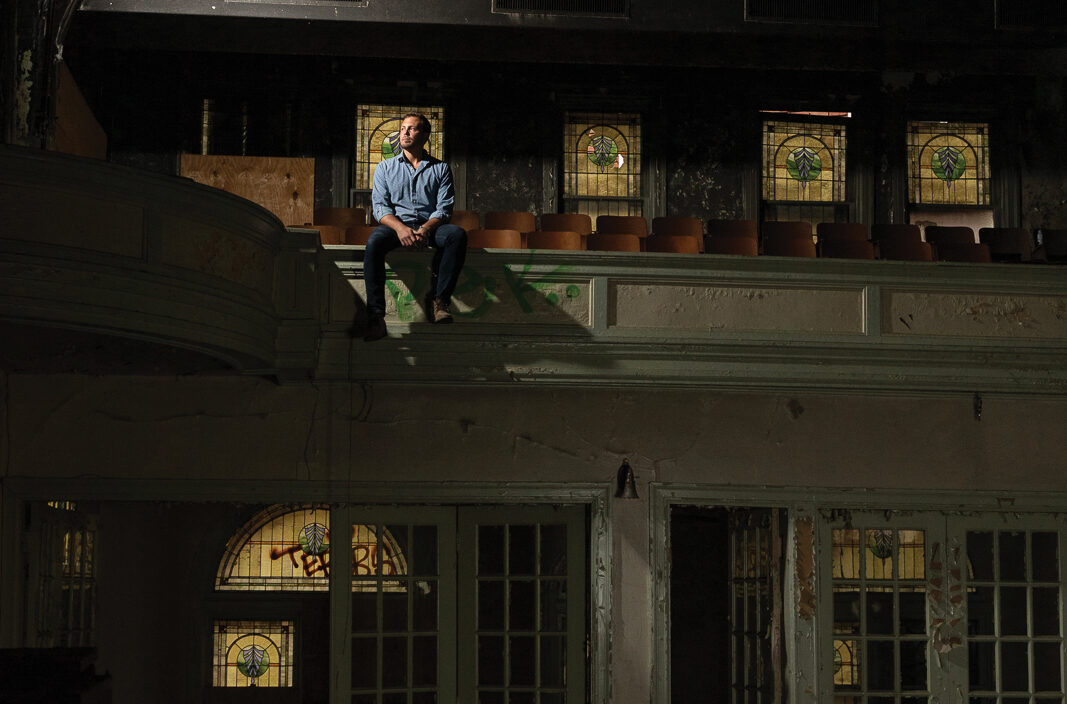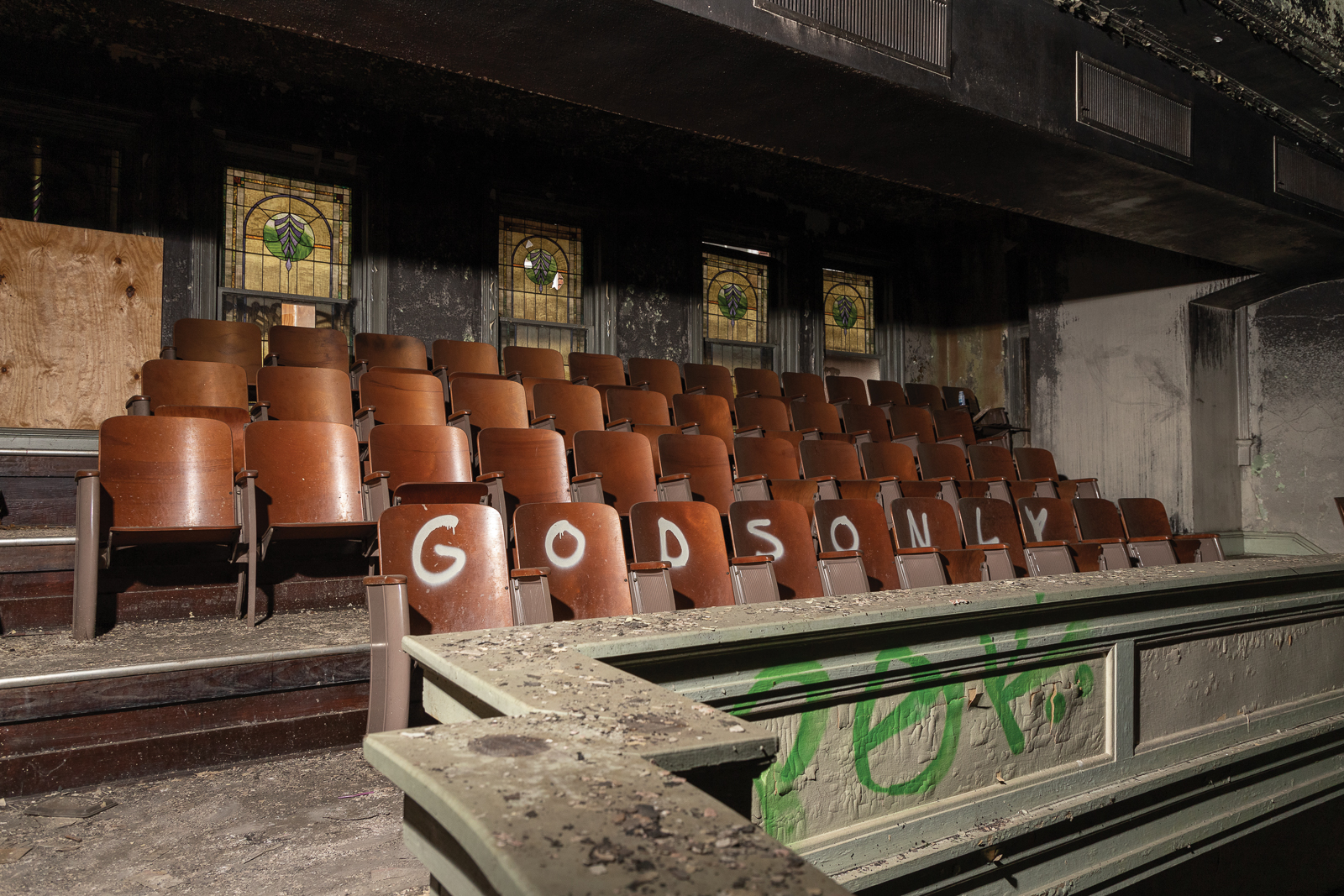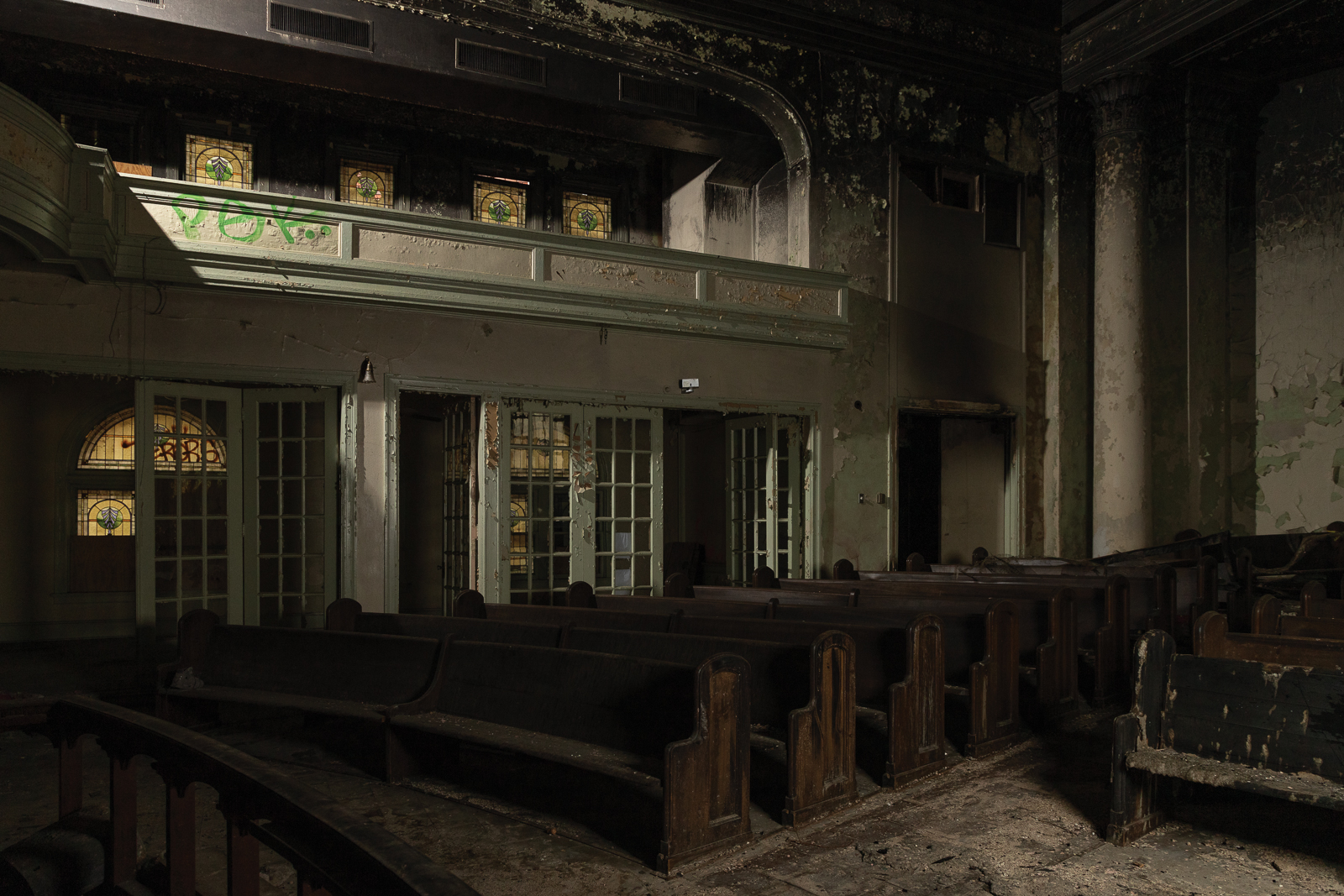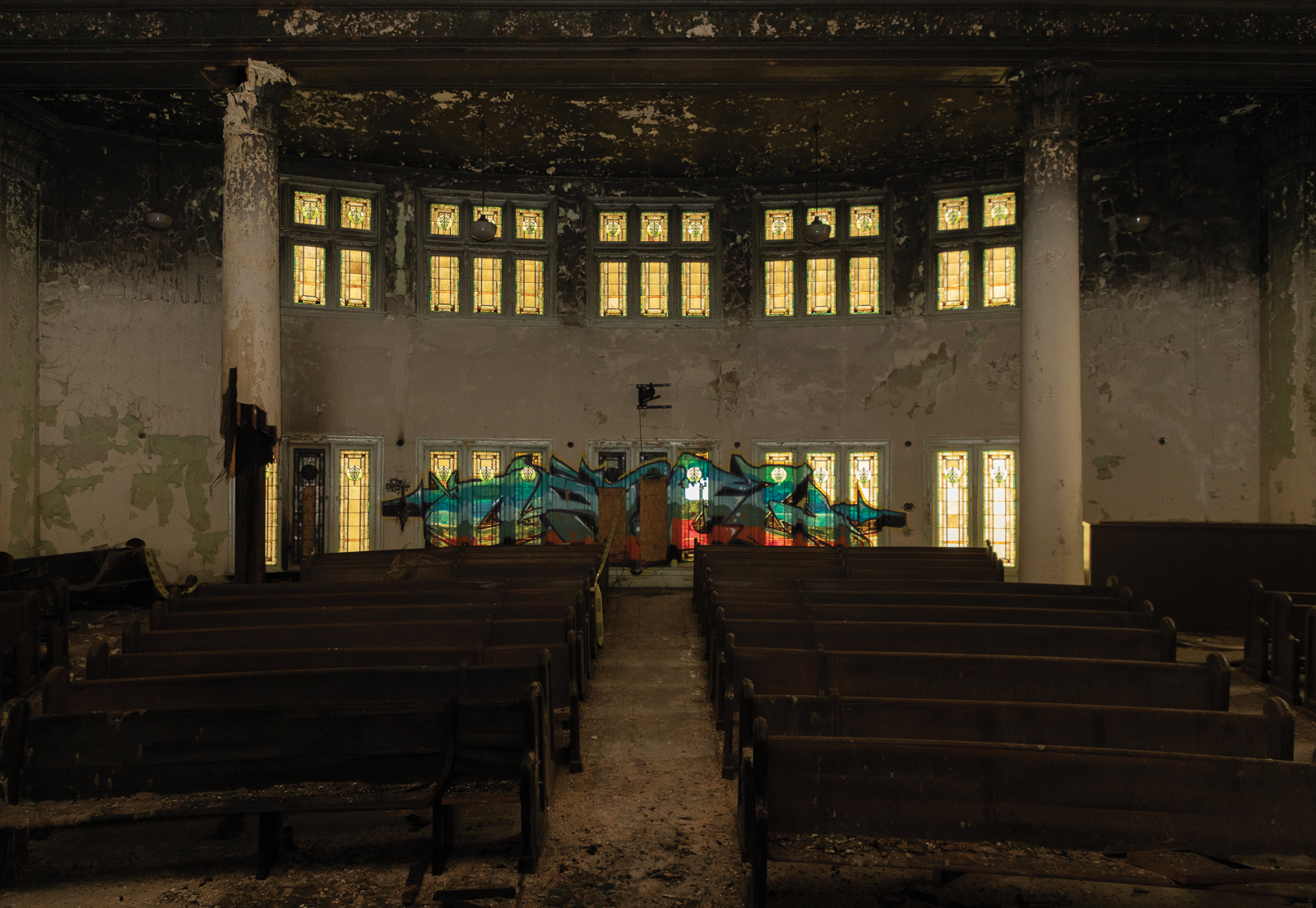
Photography by Victoria Gomez.
The black gash of fire damage has replaced the prominent organ that once towered over the congregation of the Oak Cliff United Methodist Church.
Large graffiti murals decorate the walls throughout the abandoned building, and the floor is covered with glass shards, debris and dirt.
Built in 1915, the church once stood as a symbol of Oak Cliff’s endearing piety. The building was designed by the prominent architecture firm Sanguinet and Staats, and the main sanctuary is a classical revival style.
The church has state historic registry status and is recognized as a landmark property by the city of Dallas, but when its doors shut in 2015, the building quickly fell into a state of disrepair.
For the past eight years, it has become a hotbed for homeless encampments, been the site of multiple fires, struggled to find a consistent and engaged owner, and was evaluated for demolition-by-neglect by the Dallas Landmark Commission.
It’s exactly the sort of property AJ Ramler looks for.
Ramler uses a drill gun to remove one of the large sheets of plywood that block off the entryway to the church sanctuary. As he ducks under a 2-by-4 into the building, he yells out a quick “Hello,” to warn anyone who may be inside.
Things like the potential for squatters or a floor covered in tile shards don’t phase Ramler. The co-founder of the real estate firm Proxy Properties, Ramler’s bread and butter is restoring old, dilapidated buildings.
“Once you start restoring old properties, you get the knack for it,” Ramler says. “You just keep on trying to find bigger and cooler projects.”
The Methodist church is the biggest project Proxy has taken on yet.
Clocking in at 45,000 square feet spread between two buildings, Ramler says the process of preserving and rebuilding the church is likely to take years.
The first step will be to patch up the leaky roof and inadequate fencing to prevent further damage to the property.
Then, the architecture firm ArchiTexas will be tasked with sketching the space — a process that Ramler says could take around eight months to complete.
ArchiTexas specializes in historic preservation, especially when the building being preserved is going to be reworked into a new purpose. (In 2003, the firm played a “significant role” in the Fair Park Comprehensive Development Plan.)
According to principal architect John Allender, the first step for any project is to find original drawings of the existing building.
When dealing with historic buildings, however, those drawings often don’t exist.
If that is the case, the architects then have to make their own drawings — measuring every square inch of the building, charting every incline and making note of every quirk — before creating a computer model of their findings.
Conditions assessments for structural systems, electrical and plumbing systems, windows and roofing also bring everyone up to speed on the building’s state.
“For the most part, it’s really a process of discovery and getting in there and understanding what we’re working with,” Allender says.
“It’s addictive, I can’t get away from it,” he says. “The question is, is it a good dream or a nightmare?”
Right now, Ramler says he wants to turn the property into a mixed-use development, but the planning process can’t solidify until those drawings and assessments are completed.
If all goes according to plan, the school building, which sits on the west side of the main church building, will be turned into studio apartments; the church sanctuary could be retail or work space.
“You have to figure out how to take a space that was originally designed for something else and make it work for a purpose that makes more sense in the neighborhood today,” Ramler says. “It’s not an easy project. It’ll probably take all of three years to get the first person moved in. But it’ll be a fun three years.”
Ramler says the Methodist church’s disrepair is a story he has seen before.
He has previously seen churches with a diminishing congregation continue to squeeze their budget until one massive cost forces the doors to close.
White boards in the classrooms of the church are still covered in writing, frozen in time. One board is covered in Gmail passwords and bulleted notes scrawled in orange marker, and another announces summer break with a colorful illustration of a beach scene.
Many of the properties that Proxy manages come to the firm when “no one else wants to mess with them anymore.”
Properties like the church are “really unappealing” to banks, so Proxy paid for the building in cash. Eventually, once architectural plans are in and zoning changes have been made, a construction loan will be utilized for improvements. At that point, the property should qualify for state and federal tax credits, as well, he says.
ArchiTexas will assist Proxy in getting the property on the federal registry for historic buildings. Registry designation will allow developers to recoup tax credits for approved construction costs. The state covers 25% of approved costs, and the federal credit is 20%.
“The economics of these types of projects are the most challenging from the get-go, which is why we need to get those credits to make progress,” Ramler says.
On one wall of the sanctuary is an impressive mural of a woman, painted by a renegade artist that snuck onto the property at one point.
Ramler likes her, and wants to keep her in the final design.
Striking a balance between the true historical structure and the lived history of the building is something that can be done creatively, Allender says.
“We certainly could restore everything back to the original period of significance. But a lot of times, those artifacts, that kind of evolution of the building, it’s important to the overall story,” Allender says.
Ramler steps with certainty through a building that most would balk at. Peeling walls and saggy roofs seem to disappear when he looks at them, imagining what is to come.
He has a relationship with the property, he says, that consists of fighting with it and dreaming about it.
“It’s addictive, I can’t get away from it,” he says. “The question is, is it a good dream or a nightmare?”








